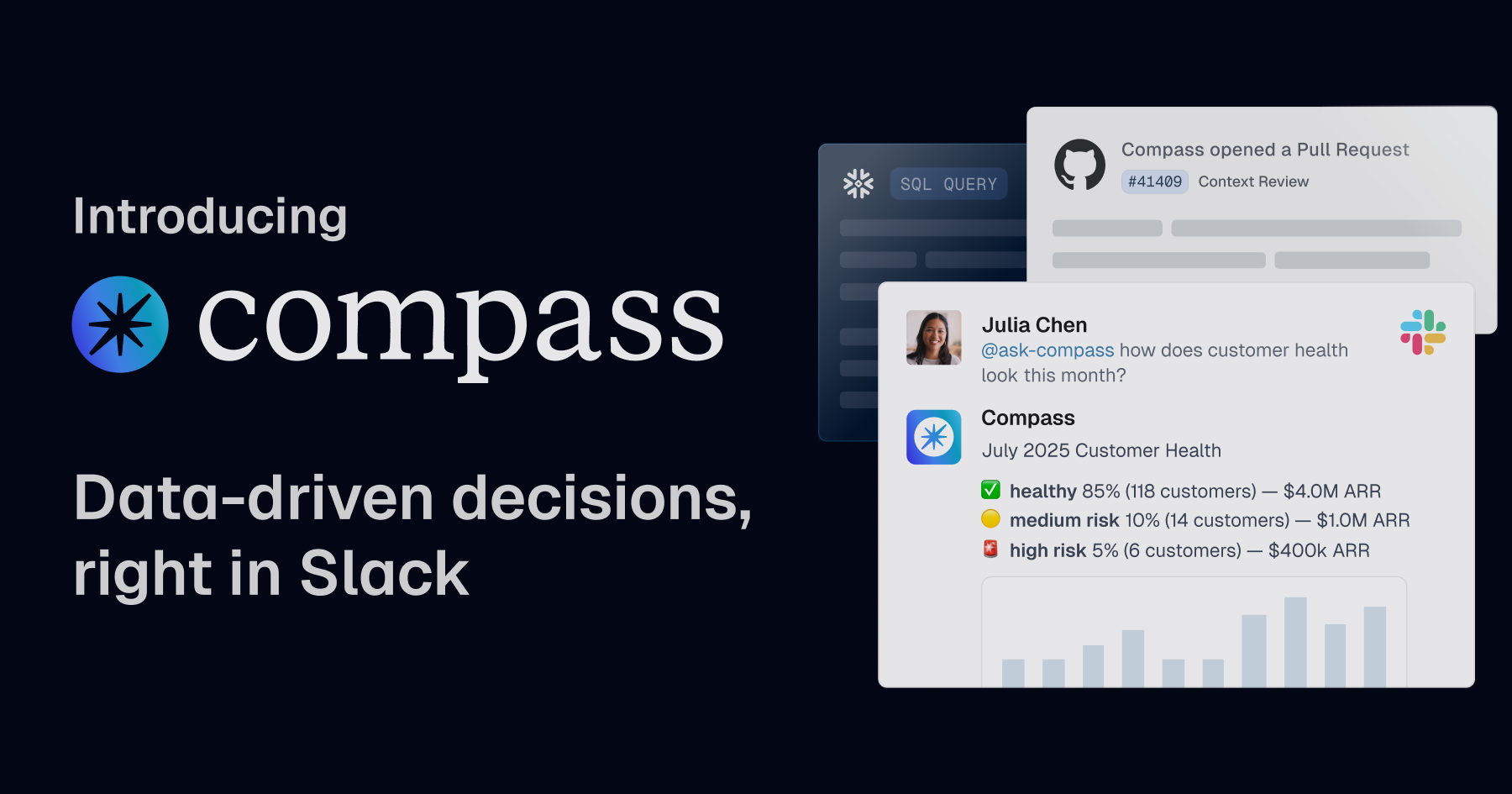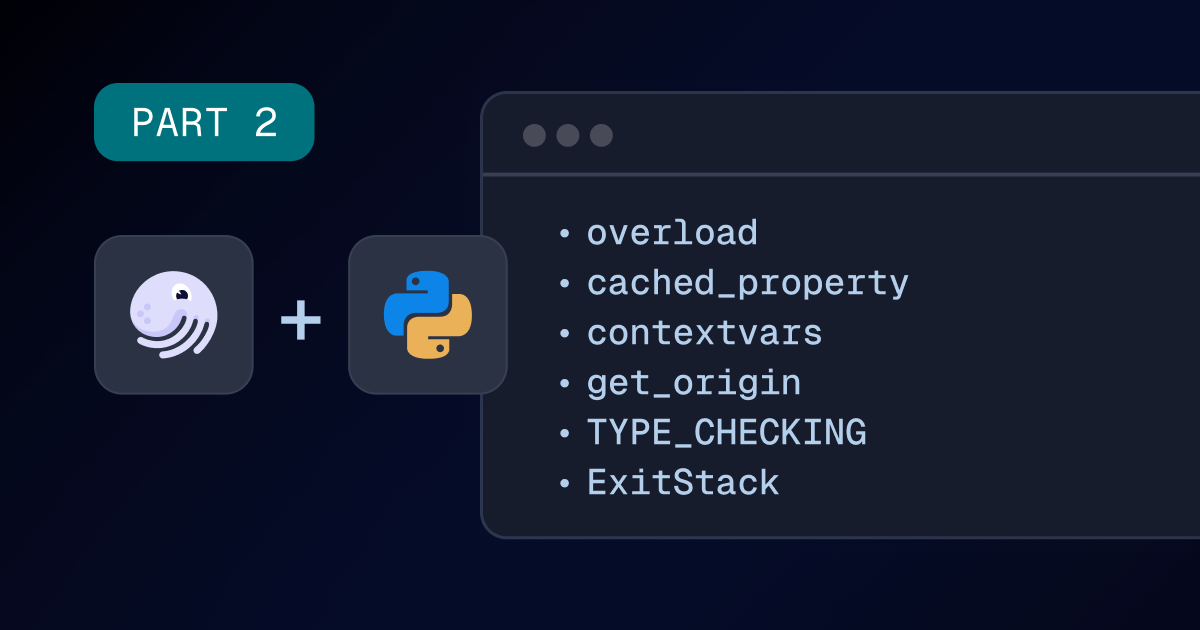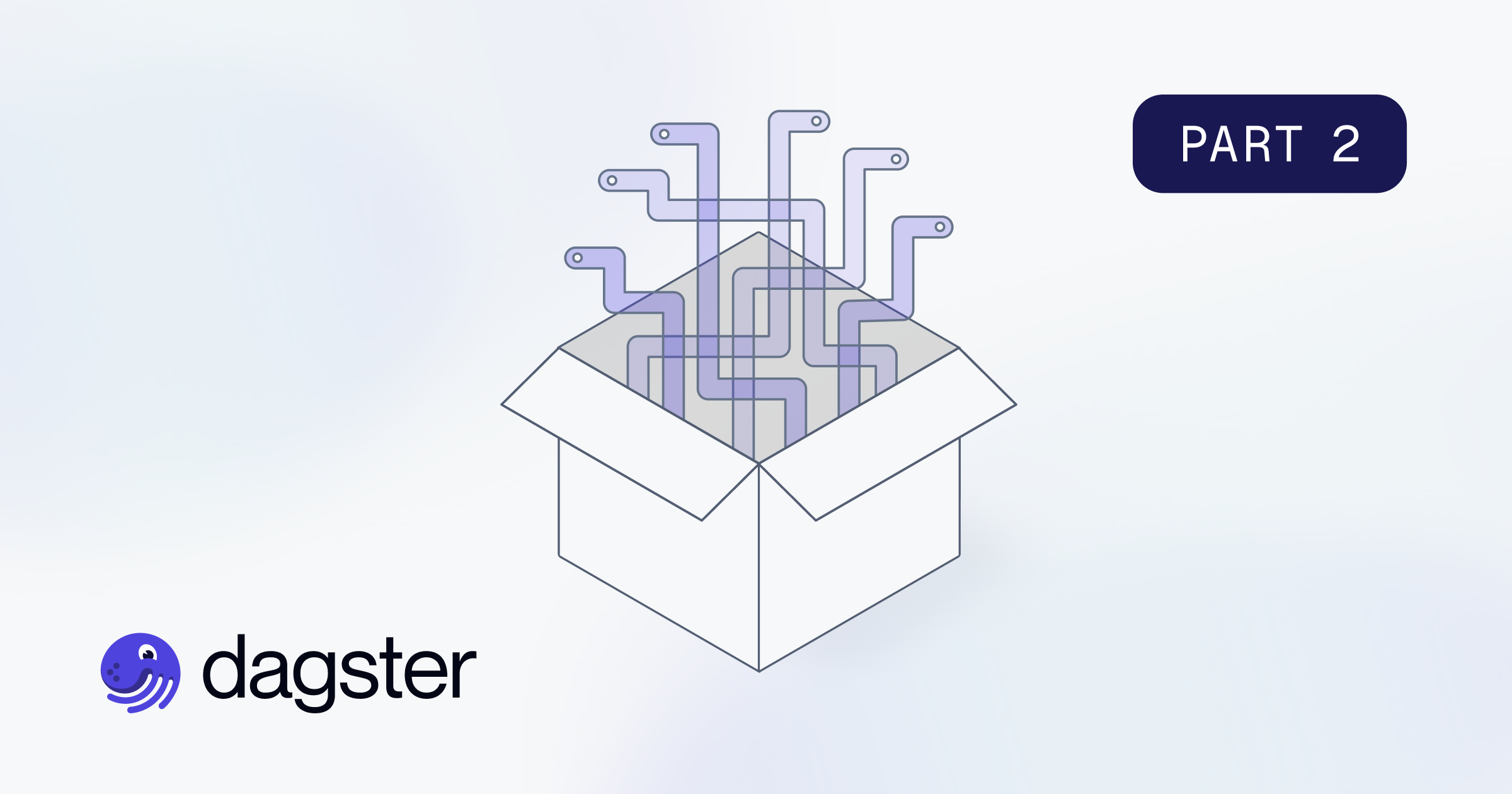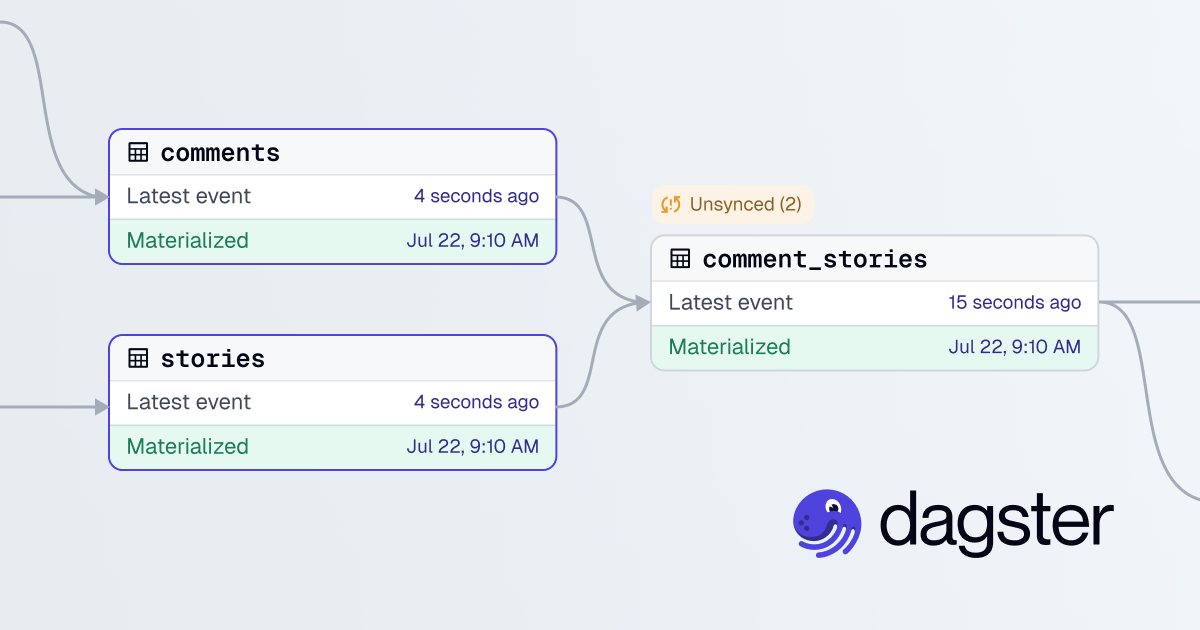Thank you! Your submission has been received!
Oops! Something went wrong while submitting the form.

September 10, 2025
Introducing Compass: Data-driven decisions right in Slack
Converse with your company's data right in Dagster. Compass moves beyond static dashboards by enabling a natural language, two-way conversation with your data. This allows anyone to ask follow-up questions, incorporate their own business context, and achieve true data fluency without writing a single line of SQL.
Product




Dagster Newsletter
Get updates delivered to your inbox














